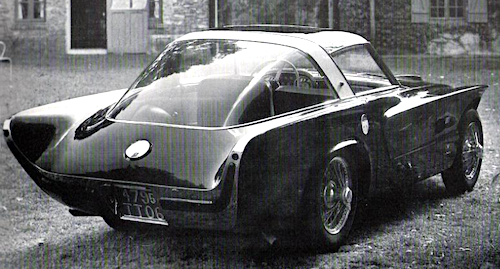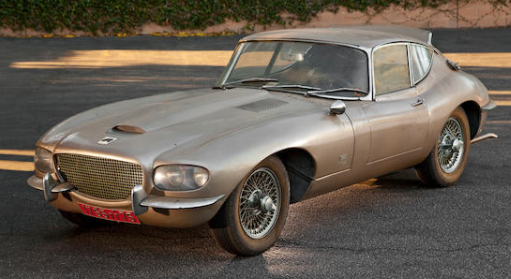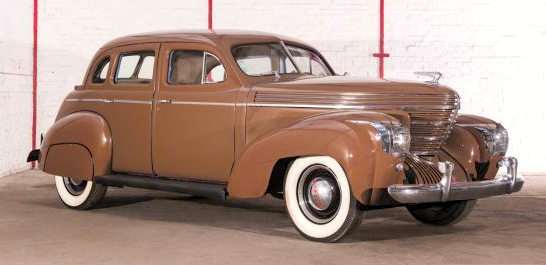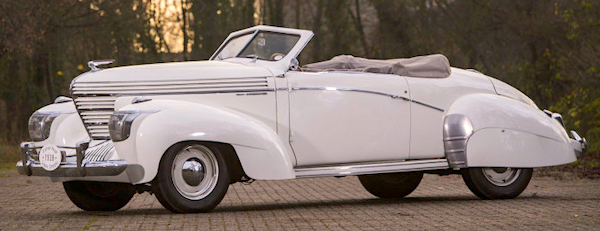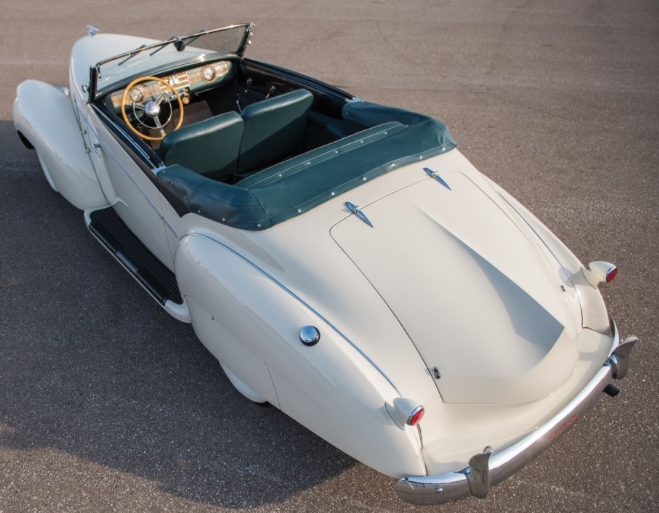Well, "reminded" might be more accurate than having learned, because years before I must have come across the same design on pages 166-167 of "Edsel Ford and E. T. Gregorie" by Henry Dominguez (link here).
The Farrell's book notes that Bob Gregorie and his Ford styling staff were inexperienced regarding large cars such as the proposed K successor code named 05L that would have a wheelbase of 142 inches (3607 mm). They mention "As war with Germany approached, both Edsel Ford and Gregorie became concerned about the strong teutonic, military look of the 05L, and a conscientious effort was made to tone it down... [A]lterations were made, but a final design was never settled before work was stopped on the car in late 1940."
Whether or not the 05L's front looked German, the rest of the design was similar to that of General Motors' upscale sedans of the time.
First, views of the full-scale 05L clay as of 28 September 1938, not long after the project was launched. Even though V'd windshields were becoming the standard at the time, this car was given an old-fashioned flat, one-piece windshield. Such were found on contemporary Chrysler Corporation cars and the Lincoln-Zephyr.
Although the body is rounded, in line with mid-to-late 1930s American styling fashion, the hood has an angular prow faintly suggestive of 1936 Cords. The father front fender had a faired-in headlight assembly similar to that of production 1938 Lincoln-Zephyrs. The grille features narrow, vertical bars.
The finished clay, this view featuring the front end. The central face has the shape of early-30s grille frames. But this being during the transition to lower, horizontal grilles, the top part is masked off. It seems Gregorie's crew was trying unsuccessfully to be both traditional-upscale and modern. I'm not sure I'd call the design German, though it does have a harsh feeling.
A 31 September 1939 photo of a later grille design. As the Farrells point out, it's similar to that used on the 1940 Ford DeLuxe. Not something one would expect to see on a luxury V-12 automobile.
A coupe variant.
Now to focus on the main body viewed from the left rear quarter. The body is massive and does not look at all beyond what was current in 1938. Perhaps the thinking was that wealthy potential buyers had very conservative tastes. Which was a fairly true assessment, though a light touch of styling trend-extension plus some elegance (quite lacking on this model) might have worked well in the market.
Here is a for-sale 1938 Cadillac Series 65 sedans car with a shorter wheelbase. Note the similarity of the rear end designs, though the Lincoln's trunk is body-width.
Auction image of a 1938 Cadillac Fleetwood Imperial Limousine, a luxury car about the same size as the proposed Lincoln. Again, the main bodies are similar.
1938 Buick Series 90 Touring Sedan, Mecum auction photo. Same body as the Cadillac
Same car. The Lincoln had a higher beltline, creating a more massive feeling.
Here is a for-sale 1938 Cadillac Series 65 sedans car with a shorter wheelbase. Note the similarity of the rear end designs, though the Lincoln's trunk is body-width.
Auction image of a 1938 Cadillac Fleetwood Imperial Limousine, a luxury car about the same size as the proposed Lincoln. Again, the main bodies are similar.
1938 Buick Series 90 Touring Sedan, Mecum auction photo. Same body as the Cadillac
Same car. The Lincoln had a higher beltline, creating a more massive feeling.




























